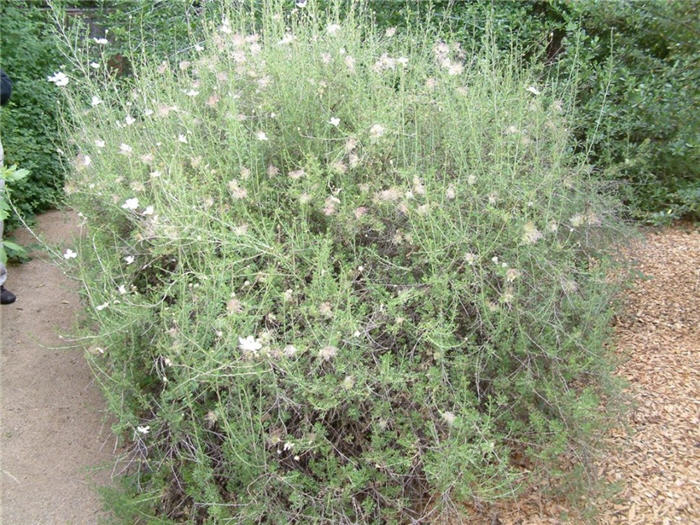| Botanical Name: Fallugia paradoxa | |
| Common Name: Apache Plume |

-
Anatomy
-
Culture
-
Design
Plant Type
Shrub
Height Range
3-6'
Flower Color
White
Flower Season
Summer
Leaf Color
Dark Green, Grey Green
Bark Color
White
Fruit Color
n/a
Fruit Season
n/a
Sun
Full
Water
Very Low
Growth Rate
Fast
Soil Type
Sandy, Clay, Loam, Rocky, Unparticular
Soil Condition
Average, Poor, Well-drained, Dry
Soil pH
Neutral, Basic
Adverse Factors
n/a
Design Styles
Meadow, Mediterranean, Ranch, Spanish, Woodland
Accenting Features
Showy Flowers, Unusual Foliage
Seasonal Interest
Summer, Fall
Location Uses
Background, Shrub Border, Parking Lot, With Rocks
Special Uses
Cut Flowers, Hedge, Mass Planting, Naturalizing
Attracts Wildlife
Birds, Wildlife
Information by: Stephanie Duer
Photographer: Mountain States Nursery
Photographer: Mountain States Nursery
-
Description
-
Notes
Native to cool desert areas, Apache Plume is well suited to dry urban gardens. White flowers, reminiscent of simple, single roses, appear June through August, and are followed by seed heads nearly as interesting as the flowers. Small, olive green, lobed leaves line branches that are twiggy and have whitish, shreddy bark. Fast growing, it will grow to 5 feet tall and nearly as wide. Though water needs are low, it will bloom more with periodic summer irrigation. A Utah native.
Over time, unpruned specimens may become floppy; prune the shrub nearly to the ground in late winter or early spring. Deer enjoy Apache Plume, and it also provides cover for small mammals and birds. Useful as a hedge, at the foundation, or in shrub borders. See planting tips. Full sun. Can survive with no irrigation once established, though it flowers over a longer period of time when irrigated monthly during the hottest months of summer.